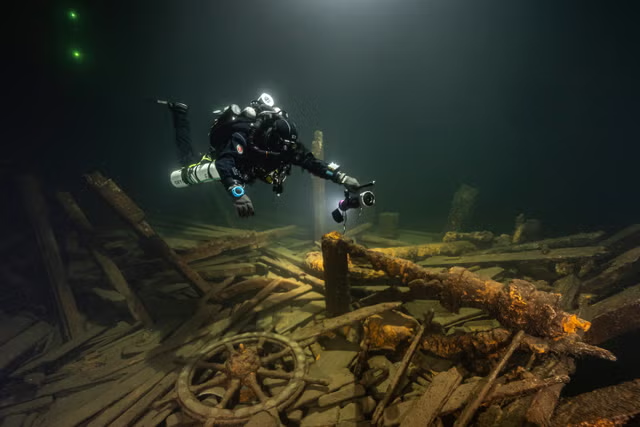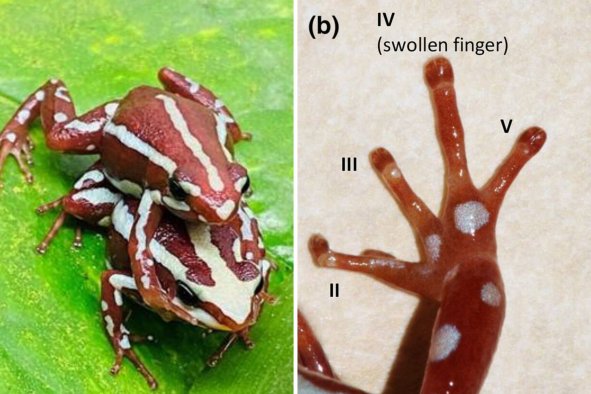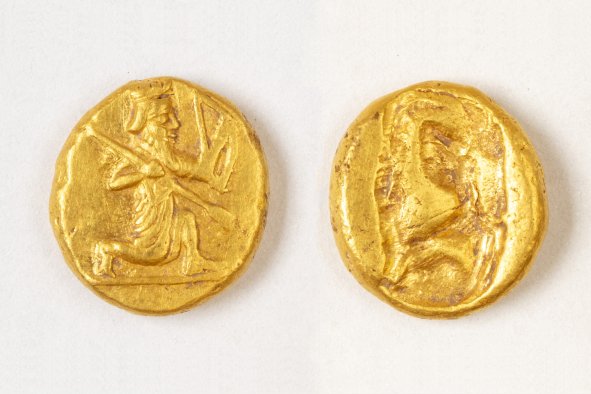While humans living on Mars is the stuff of sci-fi movies for now, scientists may have figured out a major step toward colonization, by in effect creating global warming on the planet.
It could be possible to thicken the Red Planet's thin atmosphere, transforming or terraforming it by trapping heat on the icy planet, according to a new paper in the journal Science Advances.
A technology involving tiny "metal nanorods" would be used to achieve this, and eventually melt frozen water, pushing Mars closer toward habitability. This in itself would not enable human habitation, but it would be a big first step.
In the paper, the researchers discuss a model they used to predict how using exceptionally tiny metal rods could help Mars's atmosphere get better at trapping heat. These 9-micrometer-long (0.00035 inches long) rods could be sprayed into the Martian atmosphere, helping the Red Planet trap heat from the sun.
The rods could be made out of iron and aluminum naturally found on Mars, according to the paper, and would settle ten times slower than natural Martian dust particles, staying in the atmosphere for a long time.
Currently, Mars' atmosphere is extremely thin, with an atmospheric pressure of only around 0.6 percent of Earth's average at sea level. Despite its atmosphere being over 95 percent CO2, the thinness of the atmosphere means that the planet is incredibly cold: The average surface temperature is about -80 F, but it can vary from -195 F near the poles during winter to 70 F in the daytime at the equator.
Previous research has suggested various methods of transforming Mars, known as terraforming, ranging from releasing huge amounts of artificial greenhouse gases like CFCs, or shooting immense volumes of Martian dust into the atmosphere. However, none of these suggestions are particularly practical, nor have a great chance of success.
The researchers modeled how successful these rods would be at warming Mars, and found that releasing 30 liters of these nanorods per second could end up heating the entire planet by over 30 degrees Kelvin (an increase of 54 F).
"We show here that artificial aerosols made from materials that are readily available at Mars—for example, conductive nanorods that are approximately 9 micrometers long—could warm Mars [over 5,000 times] more effectively than the best gases," the researchers wrote in the paper. "Such nanoparticles forward-scatter sunlight and efficiently block upwelling thermal infrared. Like the natural dust of Mars, they are swept high into Mars' atmosphere, allowing delivery from the near-surface."
"For a 10-year particle lifetime, two climate models indicate that sustained release at 30 liters per second would globally warm Mars by [over] 30 Kelvin and start to melt the ice. Therefore, if nanoparticles can be made at scale on (or delivered to) Mars, then the barrier to warming of Mars appears to be less high than previously thought," they said.
This would result in an increase of atmospheric pressure by around 20 percent over ten years, due to frozen CO2 becoming part of the atmosphere, with the potential for the atmospheric pressure to double or more over longer time scales.
"On a warmed Mars, atmospheric pressure will further increase by a factor of 2 to 20 as adsorbed CO2 desorbs, and polar CO2 ice is volatilized on a time scale that could be as long as centuries. This will further increase the area that is suitable for liquid water," the authors wrote.
However, the researchers caveat that it would require many years of material gathering to create the nanorods, which would be immensely expensive. Additionally, they note that this nanorod method would be nowhere near enough to make Mars habitable to humans.
"Raising Mars' temperature, by itself, is not sufficient to make the planet's surface habitable for oxygenic photosynthetic life," the researchers wrote. "On the other hand, if a photosynthetic biosphere can be established on the surface of Mars, perhaps with the aid of synthetic biology, that might increase the Solar System's capacity for human flourishing."
They even go so far as to suggest that this method could be used by aliens deep out in space, and that looking for signs of using nanomaterials to terraform could help us find extraterrestrial life.
"The efficiency of nanoparticle warming suggests that any entity with the goal of strong planet-scale warming would use this approach. This suggests polarization as a technosignature for cold terrestrial worlds with geodynamos," they wrote. "Nevertheless, our study suggests that nanoparticle warming may be of interest to the nanophotonics and planetary science communities, among others, and that further investigation might be fruitful."
References
Ansari, S., Kite, E. S., Ramirez, R., Steele, L. J., & Mohseni, H. (2024). Feasibility of keeping Mars warm with nanoparticles. Sci. Adv., 10, eadn4650. https://doi.org/10.1126/sciadv.adn4650
Do you have a tip on a science story that Newsweek should be covering? Do you have a question about Mars? Let us know via science@newsweek.com.
Disclaimer: The copyright of this article belongs to the original author. Reposting this article is solely for the purpose of information dissemination and does not constitute any investment advice. If there is any infringement, please contact us immediately. We will make corrections or deletions as necessary. Thank you.



